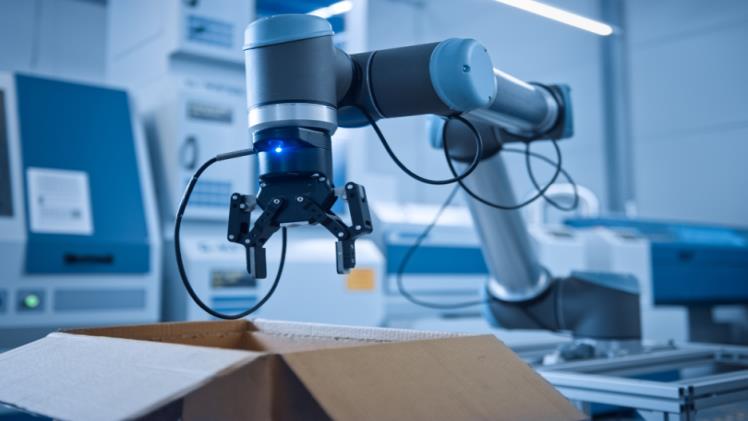As robotics integrates with electrical engineering, it fosters new possibilities, from automated manufacturing to intelligent power management. This article looks into robotics’s multiple roles in modern electrical design, providing insights into how this synergy propels advancements across numerous fields. In the innovative sphere of technology, the amalgamation of electrical engineering and robotics is a paramount development, reshaping the essence of electrical design. This union transforms traditional methodologies into advanced systems, bringing automation, precision, and enhanced functionality to various sectors.
Robotics in Construction and Electrical Infrastructure Development
The application of robotics in construction, particularly in developing electrical infrastructure, is a rapidly growing trend, reshaping the industry. In the construction of buildings and facilities, robotic systems are increasingly being used to install electrical wiring, components, and systems more efficiently and safely than traditional methods. These robotic solutions range from automated guided vehicles (AGVs) for transporting electrical materials across construction sites to robotic arms that can precisely place and connect electrical components in hard-to-reach areas.
Robotic technology in construction also includes drones equipped with cameras and sensors for surveying electrical installations and checking for potential issues early in the construction process. This early detection allows for immediate adjustments, preventing costly rework. Furthermore, robotics in construction enhances worker safety by taking over high-risk tasks such as electrical installations at significant heights or in confined spaces.
Another significant impact of robotics in construction is installing smart electrical systems. As buildings become more intelligent and integrated with IoT devices, robotic systems are essential in installing and configuring these complex systems. They ensure that the electrical infrastructure can support advanced technologies such as energy management systems, automated lighting, and security systems.
Automation in Electrical Circuit Design and Testing
The advent of robotics in circuit design and testing has marked a significant shift from manual processes to automated precision. Robotic systems, equipped with fine-tuned manipulators and vision systems, assemble intricate circuit boards, placing components with unparalleled accuracy. In testing phases, these robotic setups employ methods like Automated Optical Inspection (AOI) to detect faults at a micro-level, ensuring that each circuit meets stringent quality standards. This automation reduces production time, minimises errors, and ensures consistency, enhancing electronic device quality.
Robotics in Power Systems and Grid Management
Robotics in power system management introduces an era of efficiency and proactive maintenance. Automated drones and robots with cameras and sensors are deployed for regular power lines and substation inspections. They can identify potential faults, such as insulation degradation or structural damage before they escalate into major issues. In grid management, robotics facilitates the automation of substation operations, enhancing response times and reducing the likelihood of power outages. These robotic systems also play a vital role in remote monitoring and control, allowing for swift responses to changing grid conditions, thus ensuring stable and reliable power distribution.
Enhanced Safety in Hazardous Environments
Robots are increasingly employed in hazardous environments, mitigating risks associated with high-voltage electrical work. Robotics offers a safe alternative to human intervention in scenarios such as deep-sea cable repairs or high-altitude power line maintenance. These robots are designed to withstand extreme conditions – from the crushing depths of oceans to the dangerous heights of transmission towers. Equipped with specialised tools, they can execute complex tasks like cable splicing or transformer repairs, reducing human exposure to dangerous working conditions and significantly improving safety standards in electrical engineering operations.
Integration of IoT and Robotics in Electrical Systems
The Internet of Things (IoT) convergence with robotics heralds a new age of interconnected and intelligent electrical systems. Smart homes and buildings with IoT sensors leverage robotic systems for energy management and security tasks. In industrial settings, this integration allows for real-time monitoring and control of electrical machinery, leading to optimised performance and energy usage. The combination of IoT and robotics facilitates predictive maintenance, where data collected from sensors can indicate the need for repairs or adjustments before a breakdown occurs, thus enhancing the efficiency and lifespan of electrical systems.
Robotics in Renewable Energy Systems
In the renewable energy sector, robotics is instrumental in advancing the efficiency and sustainability of green technologies. Solar farms use robotic systems for tasks like panel installation and cleaning, maximising energy absorption and reducing manual labour. Wind farms also benefit from robotics, as automated drones and climbers inspect and maintain turbine blades and structures. These applications improve the operational efficiency of renewable energy sources and reduce the carbon footprint, aligning with global sustainability goals.
Educational and Research Advancements
The role of robotics in electrical engineering education and research is transformative. Educational institutions increasingly incorporate robotics into their curricula, offering students practical experiences designing and programming robotic systems for electrical applications. In research, robotics enables the development of novel electrical components and systems. Laboratories utilise robotic platforms for precise and repeatable testing, accelerating innovation and paving the way for cutting-edge electrical engineering solutions.
Conclusion
Integrating electrical engineering and robotics is a landmark technological development, driving progress and innovation in modern electrical design. From enhancing manufacturing processes to revolutionising power system management, the impact of robotics in this domain is profound and far-reaching. As these technologies continue to grow, they promise a future of more efficient, safe, and sustainable electrical systems. The continued advancement of this synergy will undoubtedly be pivotal in shaping tomorrow’s technological landscape, opening doors to new possibilities and challenges in the realm of electrical engineering.

